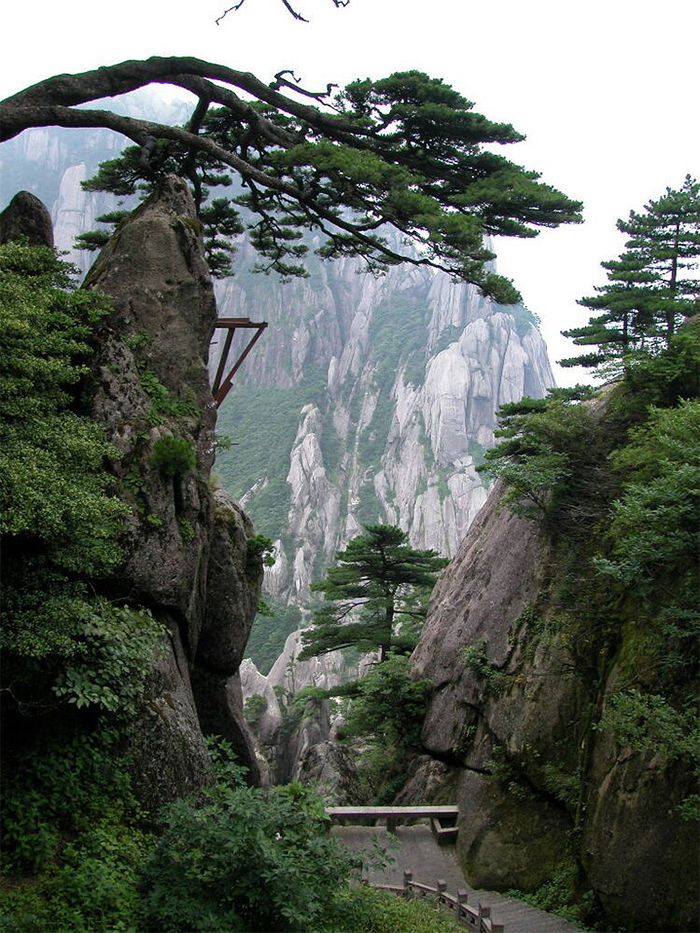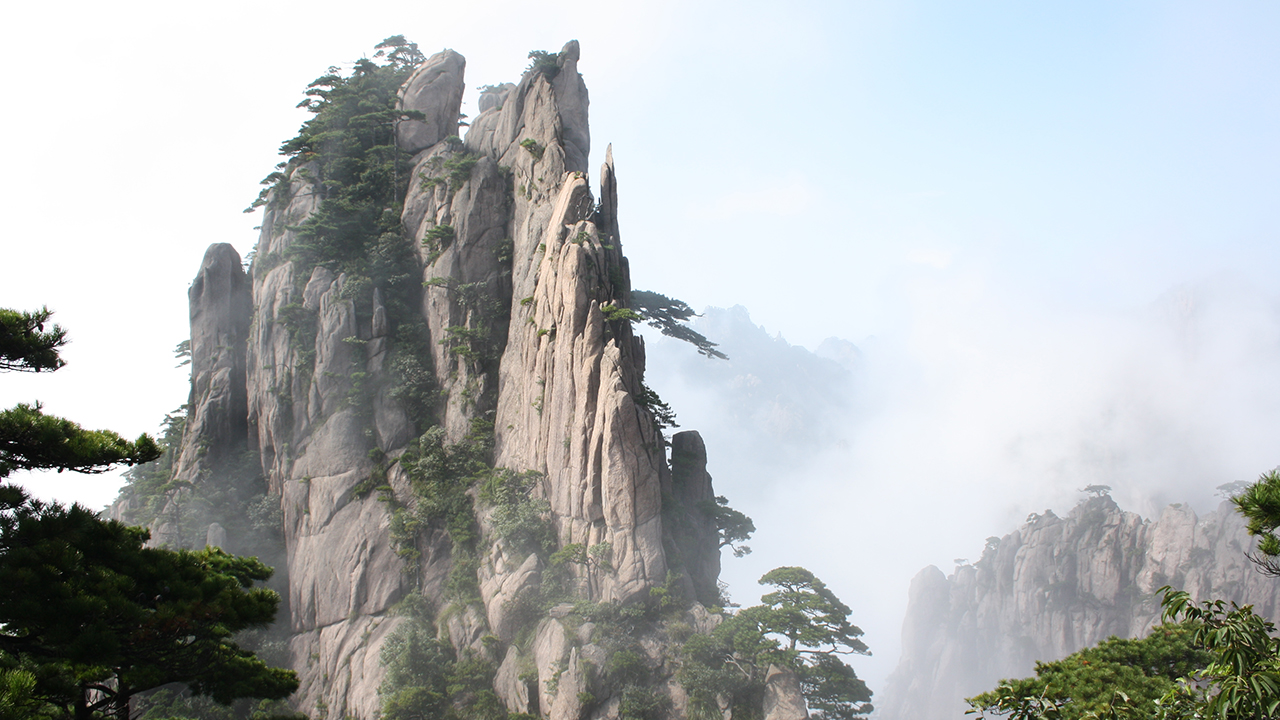Huangshan has been a bucket-list destination for Chinese tourists ever since free domestic movement and disposable income allowed for such lofty aspirations. Its beguiling landscape of dramatic granite, contorted pine, and perennial cloud made it a pilgrimage site for poets, painters, and philosophers dating back to the seventh century — cultural and scenic pedigree that saw it awarded UNESCO world heritage status in 1990.
Domestically, the destination needs little promotion: it receives upwards of three million visitors a year and risks over-tourism, a point poignantly captured in April 2020 when tourists, freshly freed from quarantine, packed its narrow paths to capacity. Rather, Huangshan is striving towards a more sustainable model, one that’s ecologically forward-thinking, emphasizes more than its photogenic peaks, and places it on the itinerary of international tourists alongside the Great Wall of China and Xi’an’s Terracotta Army.

Mount Huangshan has been designated a UNESCO World Heritage Site since 1990. Image: © UNESCO
This was the focus of the Huangshan Tourism Festival organized in part by the Department of Culture and Tourism of Anhui Province on October 15. The event brought together local government representatives, tourism stakeholders, and academics for a day of panel discussions centered on the development of cultural and creative economies with Huangshan as its focus.
“Huangshan aims to build an ecological, international, and world-class tourist destination,” George Cao, CEO of Dragon Trail International, the agency which served as the event’s technical service partner, tells Jing Travel. “Besides Mount Huangshan, there are many other rich tourism resources in the area, many of them still waiting to be discovered.”
Accordingly, the local government has identified two key intellectual properties (IPs) around which to develop its brand: Huangshan itself and Huizhou, a well-preserved local city with distinctive architecture that rose to prominence in the late Ming dynasty. The practice of driving tourism development through IP, one involving strategic placement in popular culture to creating trendy cultural products, has been used to good effect in recent years by Sanxingdui, a bronze age archaeological site in Sichuan province, and Dunhuang, a complex of muraled cave temples in Gansu province.
As Huangshan’s mayor told attendees, “The creative industry is a new driver of the development and is one Huangshan will focus on in the future,” before presiding over a signing ceremony pledging strong investment in cultural tourism, local hotel infrastructure, and education centers.
One challenge will be to distribute tourism flows evenly throughout the calendar as Huangshan typically experiences surges in summer and during public holidays. While the mountain scenic area itself has capacity limitations in place, more generally, the goal is to encourage visitors onto more destinations inside Anhui province, six of which were identified at the event including sections of the Huai and Wanjiang rivers and the Dabie mountains.
The popularity of rural and outdoor activity getaways has boomed in China during the pandemic, further heightening the appeal of Huangshan and the need of authorities to develop in a sustainable manner, one sensitive to the local environment and communities. It’s a point Manoj Mehta, CEO of Naked Group, a Shanghai-based tourism agency, succinctly made during a panel on the future of the tourism industry: “Huangshan is fortunate to have a natural beauty that’s unique, that other provinces dream of, but how do you balance growth and beauty without ruining it?”



